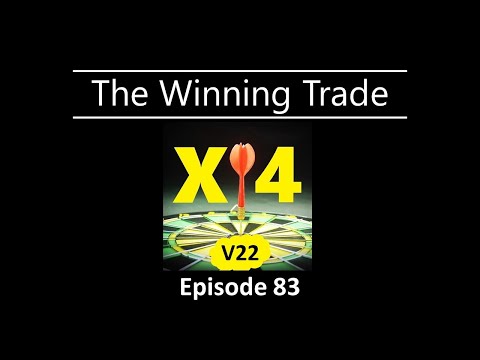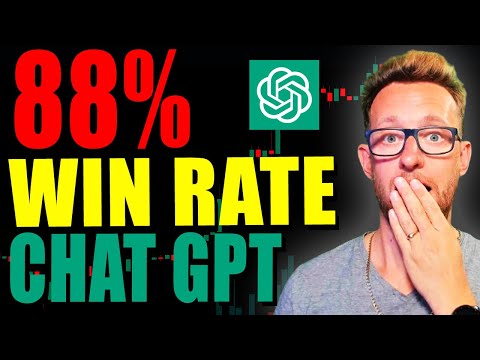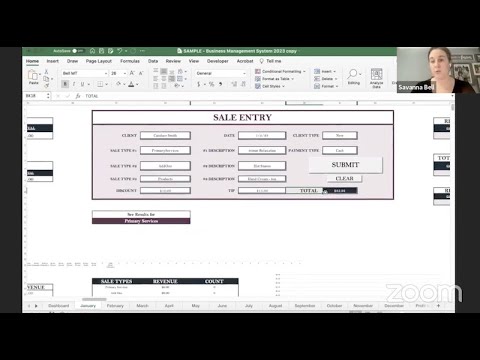The Winning Trade Episode 83

hello everyone my name is John Locke and I'd like to welcome you to the winning trade but first the required disclaimer material this presentation is given for educational purposes only we're not broker deals or financial advisors and we're not making any specific trade recommendations also please be aware that the risk and trading options is substantial so please make sure you're aware of all your risks prior to placing any trades also note that we are using hypothetical computer simulated examples and or results in this presentation their beliefs to be as accurately represented as possible keep in mind the live results can vary from similar results for many many different reasons if this is your first experience with us my name is John Locke I'm a trading performance success and wealth coach with LockeInYourSuccess.com and myself and my team of mentors are here to help you win in the markets and in life as well and today i'm going to take you into the realm of high probability options trading now high probability options trading also known as income trading is where we utilize option strategies to make money from the passage of time rather than depending solely on price movement in order to make money now this doesn't mean we're going to make money all the time but it does mean we can often make money whether the market goes up down or sideways the strategy we're going to discuss today is called the X4 version 22. the x4 version 22 is one of the 12 trading strategies that we cover weekly real time in our options trading for income weekly webinars within our go membership and this strategy is designed more for choppy bearish markets similar to what we're in today so it is somewhat bearish bias market neutral strategy for the spx meaning that if the market's relatively neutral it's generally when we do our best generally in a downtrending market normally this strategy tends to fare very well and then if we're an uptrending market we also typically win those trades as well but there are scenarios there where we may end up taking a loss when things get a little bit extreme in either direction really but it's a very high probability trade very great track record the strategy requires a minimum of 3 500 per trade on the spx and the example size that we're going to be showing you today is a 35 dollar planned capital example size this strategy does not have a profit target but generally if we have a good month usually somewhere between fifteen hundred and three thousand dollars for a profit number it can be substantially higher since we don't have a profit target we are letting our profits run and as far as an exit loss trigger or a number at which we're going to leave the trade that's going to be 2 500 which is 7.1 percent of our planned capital of 35 000 so let's get into the trade all right so this is our analytical software it's called optionnet explorer the purpose of the software is to help you understand the risk of your position so if you buy stock it's pretty simple you buy you know 100 shares of stock the stock price goes up a dollar you make a hundred dollars it goes down a dollar you lose a hundred dollars here we have a very different type of profile so what we're showing you here is this is our t plus what we call t plus zero line and we have our asset price across the bottom so the t plus zero line here it's the curve line that line tells us or gives us an approximation of what the profit and loss will be in our position as of today at any given price point in the spx and as you can see i mean we can literally have a 300 point move in the spx and it looks like we gain money to the downside and we can literally have a 300 point move up and we also gain money the upside there are instances where we get drawdowns this line isn't 100 accurate as to what will actually happen but it gives us a general idea of what should happen should we get those types of moves in the asset now over time this t plus 0 line is going to take the shape of this sharp edge line or triangle line here which is known as our expiration line which tells us what the value of this position would be at any given price point at settlement so here you can say if we're in this range at expiration we don't hold the trade till expiration but if we're in this range later on chances are we're going to be profitable potentially very very profitable if we go outside the range we do what we call adjustments where we're going to move and this strategy around to help us maintain profitability and to be positioned well so that we can make a profit on the position here so you'll notice this this trade is actually negative theta on entry that does happen from time to time in certain environments normally it's positive theta and entry eventually you'll see we will be in a positive situation a positive theta situation with the trade as over time this must at some point match our expiration line here so this strategy is a strategy that's entered 77 days to expiration so it's a rather long term strategy it's exited when the cycle two monthly cycles out is 77 days to expiration so right now we're in the may 20 20 2022 expiration cycle when our july 2022 expiration monthly cycle comes up then it's time to exit this trade so that's going to keep us in here approximately 60 days that can vary depending on the distance between the expiration cycles but that's about the time frame we're going to have and if you look here across well first of all let's go here here's the date that we're starting so this is a back testing software it allows us to go back in time and analyze our positions excellent excellent software for demonstrations and across the top here we have the last asset price of the spx which is 4311. here we have the different option cycles here where they expire down the side here we have the strike levels this is our position that we're on and you'll see that the like i said the asset price was at 4311. we enter our short strikes 17
to 27 points under the money that puts us at 42.90 for our short strikes in this case we're doing an iron butterfly and we're going to max out at 70 point wings there are different times at which we use different sized wings in the x4 version 22 program but in this implied volatility environment we're using 70 point wings so we're going to sell the 4290s we're going to buy the 43 60s we're going to sell the 4290 puts and we're going to buy the 4220s and then we're going to see what the delta is and we're going to add a call that brings us slightly positive delta in this case the call is way down or way up i should say the call is way up here at 48.40 and this happens to be an 8.1 delta call and that gives us our entry position here is the delta of our position and for those of you who don't know that's the price movement risk in the position so if the asset price goes up a dollar theoretically the position will gain a dollar if it goes down at all 50 cents i'm sorry if it goes down a dollar theoretically the position will lose 50 cents that does change as the price moves and the rate at which that changes is called your gamma your theta is your gainer loss from day to day through time at the current price point that we're at and again that theta will change depending on where we are within the tent and so forth and how close we are to expiration and the implied volatility's view curve shifts all stuff you don't really need to know at this point current profit loss is here minus 41 that's our from our entry costs okay this position like most of the positions we show on options trading for income is a position that we check once a day towards the end of the day and we decide if we need to make any adjustments as far as adjustments for this if we get too far behind the market we roll back if we get 10 points over our long strikes to the upside we roll up and we also have a delta adjustment to the upside which is going to be minus 25 inside the 10 minus 20 minus 15 outside the tent is what we're using so this is our entry position for those of you curious this is the price chart now this is a non-subjective position so it doesn't really matter what the price is doing here we're just entering it on a certain day we'll let the trade run out and see how it goes but you can see we're in a very volatile choppy that appear a market that appears to be either running sideways or maybe even downtrending a little bit at this point so that's what we have let's just go from trade to trade here so it's march 4th friday if we go to the first adjustment that is going to be on march 17. so some time went by and we ended up getting a substantial up move in the asset price and
at this point we're more than 10 points over our long strike so if i look at where my long strike is it's at 43.60 asset price is 43.94 after this decent size up move today that triggers what we call an upside adjustment now when we do an upside adjustment we simply move the position we sell the position off and we move it up to what we call entry position as if we entered the trade again so here you'll see this we close this position and we're and since the asset price is at 43.94 we're going to come in at the 4370 short strikes which are right here we have our 70-point wings and we're also going to if needed move this call let me see if we actually moved it here yeah we did we did make a move with the call we moved it from 4840 up into 47.60 again that deals with the the delta shift in the position so let's go to the next adjustment so it's march 17th and that happens to be the very next day so we went one day here and bam we get another 52 point move or so in the asset price if we look at where we are we're at 44.64 our upper long strike is at 44.40 so we're going to close this position we're going to move this up to 4440
on this so we're going to sell the position and go back to entry position at the 44 strike level and again if we need to we will make a move in the call let me see what ended up here yeah we move the call a couple of strikes here just to bring down our delta number a little bit towards neutral and this is our new position if we go to our next adjustment so it's friday march 18th we end up doing nothing for 10 days till march 28th again the asset price is continues to climb and we're all the way up here to 45.65 and that being the case we're more than 10 points over our upper long strikes which are at 45 10. we are once again going to roll this higher so we're going to close the position out and we're going to move to the asset price of 45 40. so we're moving up basically a hundred points
the 45 40. we're doing our 70 point wings we are doing our delta correction with our call and this is our new position here if we continue to go forward here the very next day the market rips up another 60 points this is an insane up move in the spx and this is a bearish bias strategy but you can tell we're doing fairly well we're not money of course but you know we're only down 1616 and we've had this incredible incredible move up in the spx very fast very aggressive we are again over our 46 10 long strikes by more than 10 points the asset price is at 46.35 that's going to put our position up to let's see 46 10. i do that see our shorts are 4610 we are still going to be using utilizing our 70-point wings and we're going to make a delta correction with the call as needed to bring us to slightly positive delta here is what the position looks like after our roll so let's move forward here we go from the march 29th april 11th which is quite a ways and let's take a look at what happened here we had we had the market here and if we take a look at our price chart we had this very very large aggressive up move and now the market decides to do what it has been doing is making a very aggressive down move to the downside so one of the things even though we had this down move here you can see we're doing fairly well with our profit we're up to 721 despite the fact we're in a neutral strategy and the market's been anything but neutral but we're doing okay we're up at 721 dollars if we take a look at our risk profile we are getting to the point where the downside risk is becoming a problem and that is defined by a couple of ways but one of the ways i like to define it here or a general definition would be if you see our two standard deviation move if we're say under 45 days to expiration and a two standard deviation move is outside of our lower long strike generally and we're positive delta generally you know that's going to be too far down in other words we get too far away from the tent so that being the case you know if you if you used your imagination and you move this two standard deviation mark back to this level here and you can do it mathematically too by the way because you know where the upper point is and you can say well the asset price is down 70 points you can take this whole shaded area and move it down 70 points in your mind uh and you can see whether you're in there that's one of the things that you could do here but this is far enough back where we're going to be looking at taking a roll back here and when we roll this back we only roll it back to the point where we are well inside our two standard deviation mark again you'd have to do do the math in your head or picture this where the asset price would be today but this puts us well inside the two standard deviation mark the theory being that i don't want the market to get so far behind the position that it doesn't really have a chance of getting back into the tent area but i also don't want to go so far back that if i get any kind of reversal i'm going to be up in this area because i don't really want to play the market in this area i'm not going to make any money in that manner so what we did here is we rolled this back from 46 10 short strikes to 45 10 we roll it back 100 points and this is going to be our new entry position we generally maintain a little bit of positive delta whenever we do a roll so let me move forward here to next adjustment so it's mark it's april 11th we go to april 22 and we sort of run into the same situation so you can see we had this very big up move now we're dealing with a very big down move and we've been gaining some profits so you know usually it's always a little bit of time that goes by if we're trending down normally we're making money so we're up about 1351 here and this is what we look like we have a little bit too much downside risk for the same reason we talked about on the last down adjustment so what we're going to do is we're going to roll this back and let's see we rolled it back to here and this roll back point is going to change by the way depending on how close the expiration we are and we're going to roll it back to about here and that's going to give us short strikes of 43.70 we're still running 70 point wings we'll move our call as needed right here at 61 delta we're maintaining relatively neutral slightly positive delta here so if we go from here next adjustment is the 26th so what ended up happening here is the downspeed is really picking up right you can see the market had two really hard down days it kind of paused for a moment and then it was pushing down again this time was 108 points which is a pretty big move on the spx we don't see that all that often either way we're back to the point we're a little too far back on this so we're going to make a roll back in this case we're rolling it back from let's see where were we we were at 43.70 and we're rolling it back to 42.60 and that's pretty common for a rollback on these usually when you roll back it's normally around 100 points it can be more there are times when it's like 200 points but and times when it's less but this is pretty much fairly standard we're up 992 dollars the speed of the move is going to damage us a little bit but we're doing okay we have to watch our exit date we're now 24 days to expiration and how far is july here july is now 80 days to expiration so we're exiting this in three days okay and we want to keep that in mind on whether we want to make any more adjustments or not if we get too close to expiration or our exit date we're generally not going to make any roll for example we'll just exit the trade so here we have this position let's just go the next three days here's the 27th here we get a little bit of a bounce here we're up 15 12 and here's the thursday we have a 109 point up move and we're up 2047 and this is looking pretty nice and then finally on friday let me ignore trades this is going to be our exit date per guidelines friday the 29th we have getting a 129 point down we have another monster move in the spx and at this point we're up about fifteen hundred dollars just under fifteen hundred dollars and would it have been better to exit the day before yes and if i'm trading this subjectively might have i have exited the day before yes but again this is a non-subjective rule set we're just kind of following our guidelines here the market's going to give us what it's going to give us so here if we take a look at our price chart take a look at the price movement here we have this we pretty much lived through this entire up move the entire down move back to where we were here and as you can see here looks like it's continuing down but with this here we would close this position with a profit of after commissions of fourteen hundred and fifty one dollars on our thirty five thousand dollar plan capital now one of the amazing things you'll find about about the trade is we got no ways near thirty five thousand dollars playing capital in the position meaning our actual profit is actually much much higher than what we're showing here from a percentage standpoint if you're dealing with actual capital and trade versus planned capital in the trade but for now we are up fourteen hundred and fifty one dollars and fifty four cents in a slightly bearish market neutral strategy in only uh 56 days in a market that is anything but neutral and had a very severe whip saw from the market going up a very large amount and then coming back down a very large amount absolutely amazing and that is the x4 version 22 this episode winning trade if you like what you see i encourage you to come on over to LockeInYourSuccess.com that's LockeInYourSuccess.com or thewinningtrade.com
and discover how you too can follow along with this and many other great strategies as they unfold during our weekly options training for income webinars where we teach you how to master market neutral strategies through showing you multiple trading strategies by the guidelines through varying market conditions also if you subscribe at thewinningtrade.com you are also the first to be notified about upcoming winning trade presentations you get to explore past winning trades and you get to receive access to free bonus material also while you're there be sure to check out our free trading performance podcast where you can learn to skyrocket your trading results regardless of the type of trading you do if you have any questions comments or anything else you'd like to see on the next winning trade we'd love to hear from you please comment on the video below and I'll make sure i answer your questions and comments for you personally thank you for joining me and i look forward to seeing you on the next winning trade
2022-06-20 09:47


